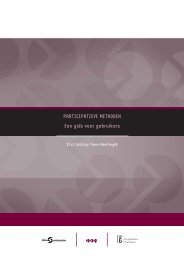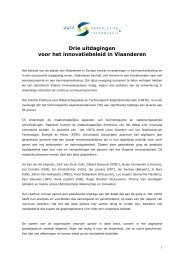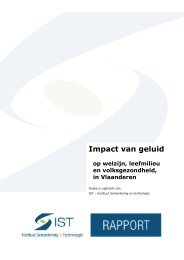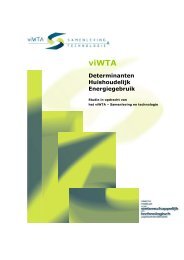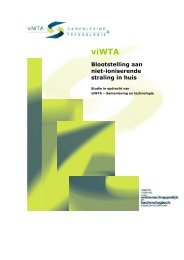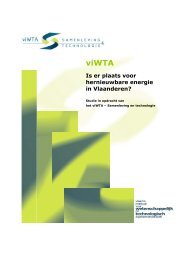Rol van Fossiele bronnen: rapport - Instituut Samenleving en ...
Rol van Fossiele bronnen: rapport - Instituut Samenleving en ...
Rol van Fossiele bronnen: rapport - Instituut Samenleving en ...
Create successful ePaper yourself
Turn your PDF publications into a flip-book with our unique Google optimized e-Paper software.
eserves attributed to improved recovery methods wh<strong>en</strong> (a) a project or pilot is<br />
planned, but not in operation and (b) rock, fluid, and reservoir characteristics are<br />
such that a reasonable doubt exists that the project will be commercial, and (5)<br />
reserves in an area of the formation that appears to be separated from the<br />
proved area by faulting and geological interpretation indicates the subject area is<br />
structurally lower than the proved area. Oft<strong>en</strong> referred to as 3P.<br />
Mate <strong>van</strong> zekerheid (in %)<br />
Probable Reserves – Waarschijnlijke reserves<br />
Probable reserves are those unproved reserves which analysis of geological and<br />
<strong>en</strong>gineering data suggests are more likely than not to be recoverable. In this<br />
context, wh<strong>en</strong> probabilistic methods are used, there should be at least a 50%<br />
probability that the quantities actually recovered will equal or exceed the sum of<br />
estimated proved plus probable reserves. In g<strong>en</strong>eral, probable reserves may include<br />
(1) reserves anticipated to be proved by normal step-out drilling where subsurface<br />
control is inadequate to classify these reserves as proved, (2) reserves in<br />
formations that appear to be productive, based on well log characteristics, but<br />
lack core data or definitive tests and which are not analogous to producing or<br />
proved reservoirs in the area, (3) increm<strong>en</strong>tal reserves attributable to infill drilling<br />
that could have be<strong>en</strong> classified as proved if closer statutory spacing had be<strong>en</strong><br />
approved at the time of the estimate, (4) reserves attributable to improved<br />
recovery methods that have be<strong>en</strong> established by repeated commercially<br />
successful applications wh<strong>en</strong> (a) a project or pilot is planned, but not in operation<br />
and (b) rock, fluid, and reservoir characteristics appear favorable for commercial<br />
application, (5) reserves in an area of the formation that appears to be separated<br />
from the proved area by faulting and the geologic interpretation indicates the<br />
subject area is structurally higher than the proved area, (6) reserves attributable<br />
to a future workover, treatm<strong>en</strong>t, re-treatm<strong>en</strong>t, change of equipm<strong>en</strong>t, or other<br />
mechanical procedures, where such procedure has not be<strong>en</strong> proved successful<br />
in wells which exhibit similar behavior in analogous reservoirs, and (7)<br />
increm<strong>en</strong>tal reserves in proved reservoirs where an alternative interpretation of<br />
performance or volumetric data indicates more reserves than can be classified as<br />
proved. Oft<strong>en</strong> referred to as 2P.<br />
144<br />
90%<br />
50%<br />
10%<br />
totale voorraad<br />
totale bek<strong>en</strong>de voorraad<br />
totale reserves<br />
bewez<strong>en</strong> reserves<br />
waarschijnlijke reserves niet winbaar geacht onbek<strong>en</strong>de voorraad<br />
mogelijke reserves<br />
Zoek<strong>en</strong>, vind<strong>en</strong> <strong>en</strong> winn<strong>en</strong>



